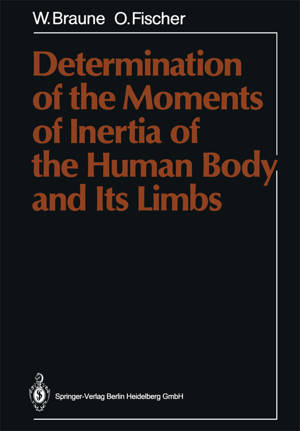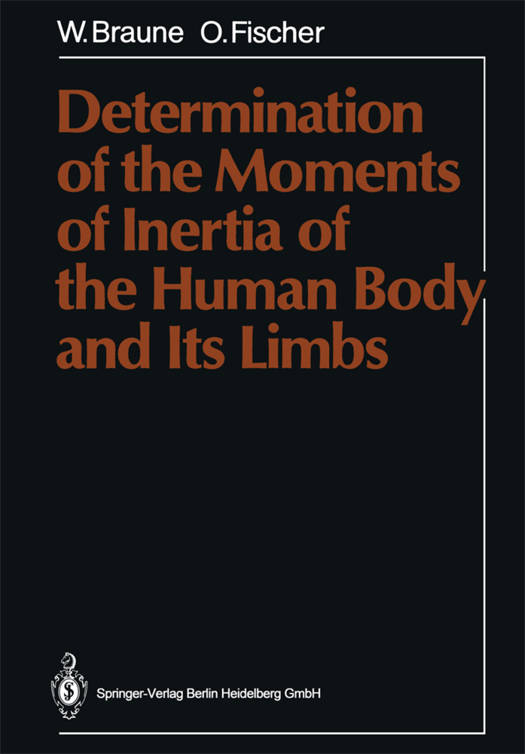
- Afhalen na 1 uur in een winkel met voorraad
- Gratis thuislevering in België vanaf € 30
- Ruim aanbod met 7 miljoen producten
- Afhalen na 1 uur in een winkel met voorraad
- Gratis thuislevering in België vanaf € 30
- Ruim aanbod met 7 miljoen producten
Zoeken
Determination of the Moments of Inertia of the Human Body and Its Limbs
Wilhelm Braune, Otto Fischer
Paperback | Engels
€ 97,95
+ 195 punten
Omschrijving
This is another classic contribution by Braune and Fischer to the field of biomechanics. The pendulum method was employed to ascertain ac- curately the moments and radii of inertia of the human body and its different parts about all axes - transverse, oblique or longitudinal. This elegant method is described in detail, together with the results. Relations were found between the centres of inertia on one hand and the lengths and diameters of the body segments on the other. These data were originally prepared for the authors' later work, The Human Gait, to determine the forces exerted on and by the parts of the body during walking. Such work is the basis for solving the mechanical prob- lems related to any movement of the human body: thus, the original results presented here continue to be of im- mense value to current research and practice. Aywaille, May 1988 P. Maquet v Contents Introduction . . . . . . . . . . . . . . 1 Experimental Determination of the Moments of Inertia of the Parts of the Body About Axes Through the Centre of Gravity and at Right Angles to the Longitudinal Axis, and About the Longitudinal Axis Itself . . . . 11 First Series of Experiments. . . . . 16 Second Series of Experiments. . . . 25 Oscillations of the Trunk and Head System. 29 Oscillations of the Trunk Without the Head 30 Oscillations of the Head. . . 31 Oscillations of the Left Leg. . . . . . . . 31 Oscillations of the Left Thigh. . . . . . . 31 Oscillations of the Left Lower Leg and Foot System . . . . . . . . . . . . 32 Oscillations of the Left Lower Leg . . .
Specificaties
Betrokkenen
- Auteur(s):
- Vertaler(s):
- Uitgeverij:
Inhoud
- Aantal bladzijden:
- 86
- Taal:
- Engels
Eigenschappen
- Productcode (EAN):
- 9783662112380
- Verschijningsdatum:
- 14/01/2013
- Uitvoering:
- Paperback
- Formaat:
- Trade paperback (VS)
- Afmetingen:
- 170 mm x 244 mm
- Gewicht:
- 167 g

Alleen bij Standaard Boekhandel
+ 195 punten op je klantenkaart van Standaard Boekhandel
Beoordelingen
We publiceren alleen reviews die voldoen aan de voorwaarden voor reviews. Bekijk onze voorwaarden voor reviews.








